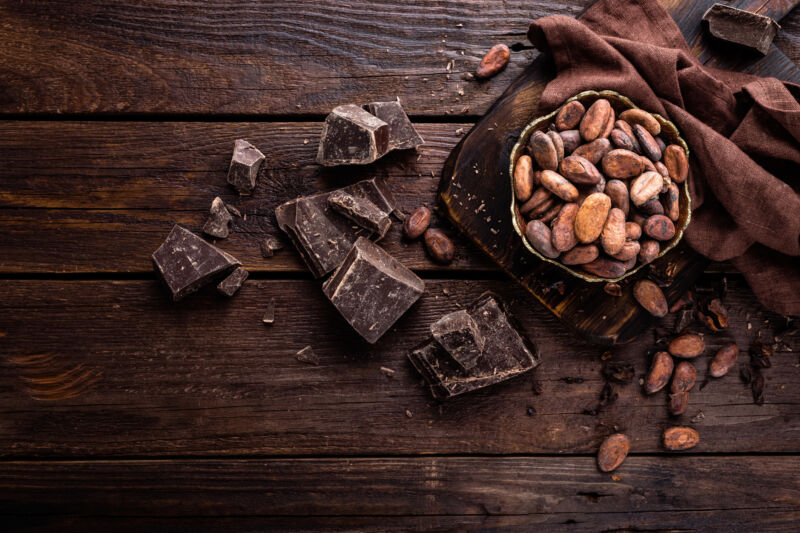Chocolate made with fewer calories, less waste

Enlarge (credit: YelenaYemchuk)
Commercialization has not dealt kindly with the Mayan Food of the Gods. Modern chocolate products are filled with sugar and calories, contributing to the obesity epidemic in the West. And the cocoa crop is hardly in great shape; climate change is decreasing production, causing prices to rise; farmers in West Africa have responded by clear-cutting rainforests to plant more cocoa plants. However, researchers at ETH Zurich may have found a path to start addressing both problems, making chocolate that has less sugar and calories and makes more efficient use of the cocoa crop. The Swiss perfected chocolate-making over 200 years ago, so if they say the chocolate is good, it is.
Chocolate is traditionally made by mixing dried, roasted, and ground fermented cocoa beans to make cocoa mass. The cocoa mass is then mixed with refined sugar, usually from sugar beets. Instead of sugar, this new Swiss whole fruit chocolate uses the pulp surrounding the cocoa beans along with the inner rind of the cocoa pod husk to make a cocoa gel. When mixed with cocoa mass, this produces chocolate that is higher in fiber and lower in saturated fat than conventional chocolate.
The whole fruit" on its label is certainly more appealing than the air or fish oil that has previously been substituted for cocoa butter to reduce the saturated fat content of chocolate confections. (Extra cocoa butter, or fat isolated from the cocoa bean, is sometimes added to cocoa mass to make the end product smoother and waxier.) The pulp and the cocoa pods are generally discarded, so upcycling them instead of tossing them could reduce the land use impact and global warming potential of cocoa cultivation.